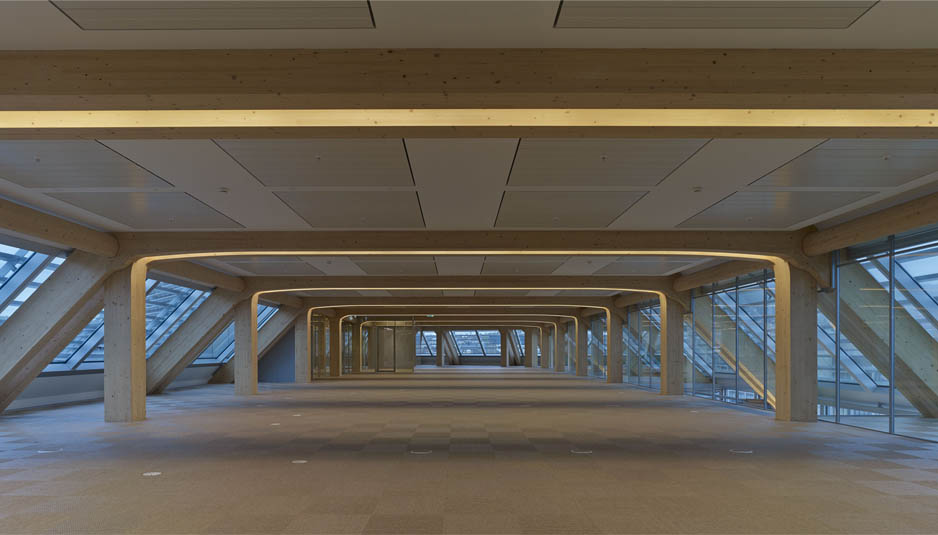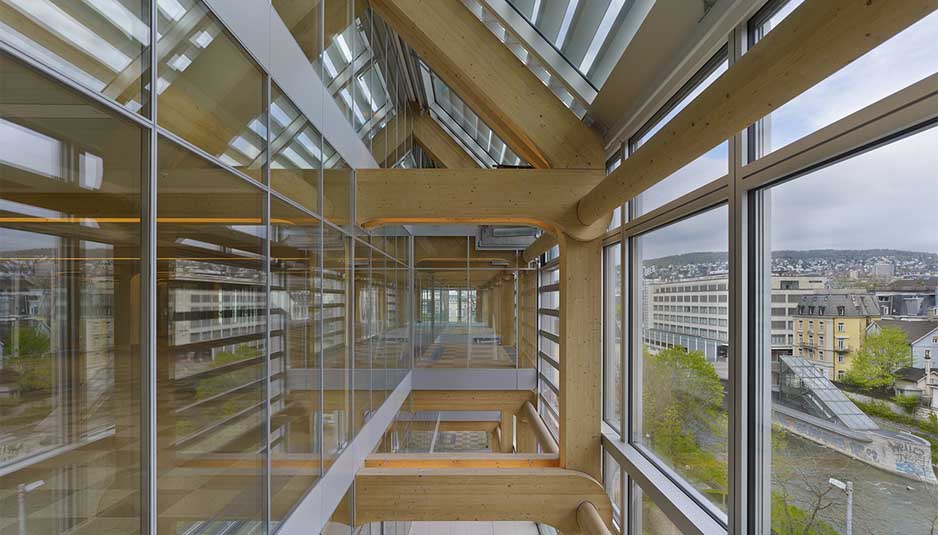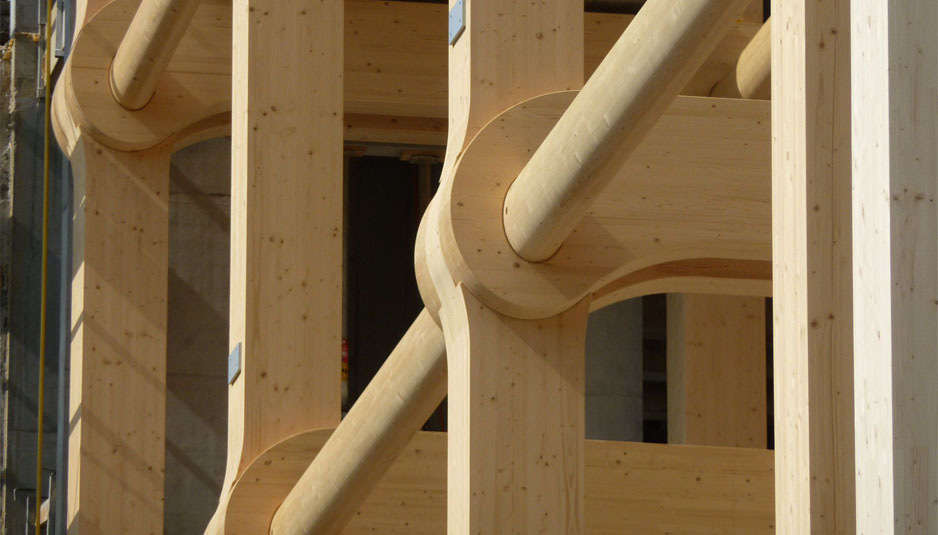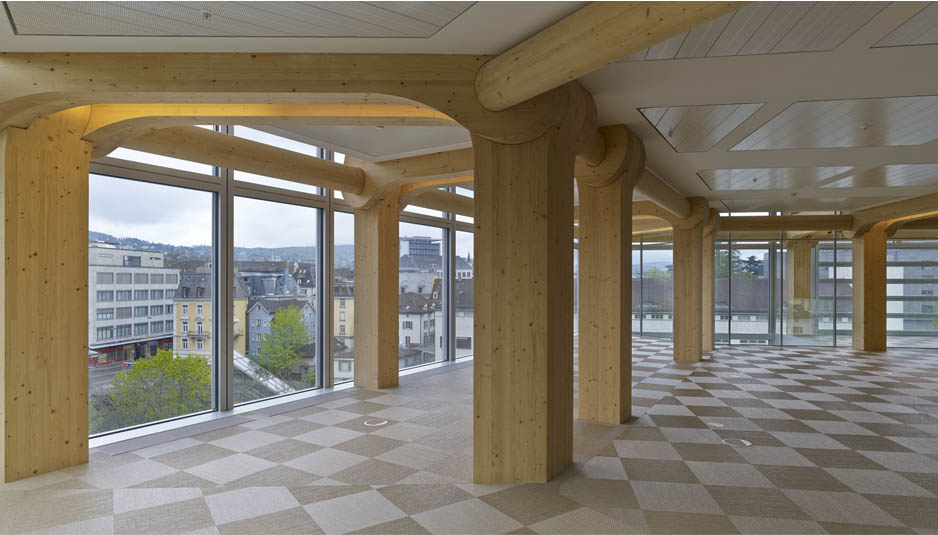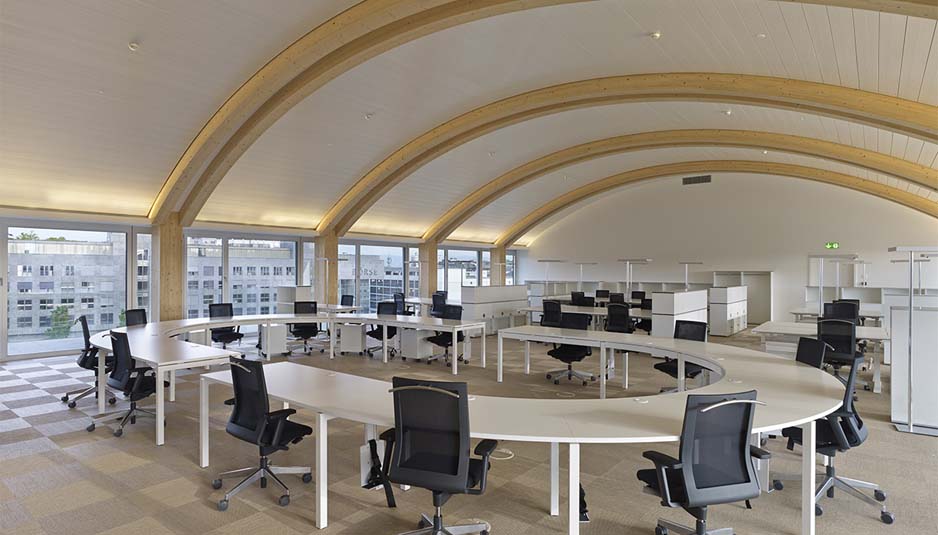Tamedia Office Building: a breathing building
A concentrate of traditional Japanese techniques and environmental sustainability
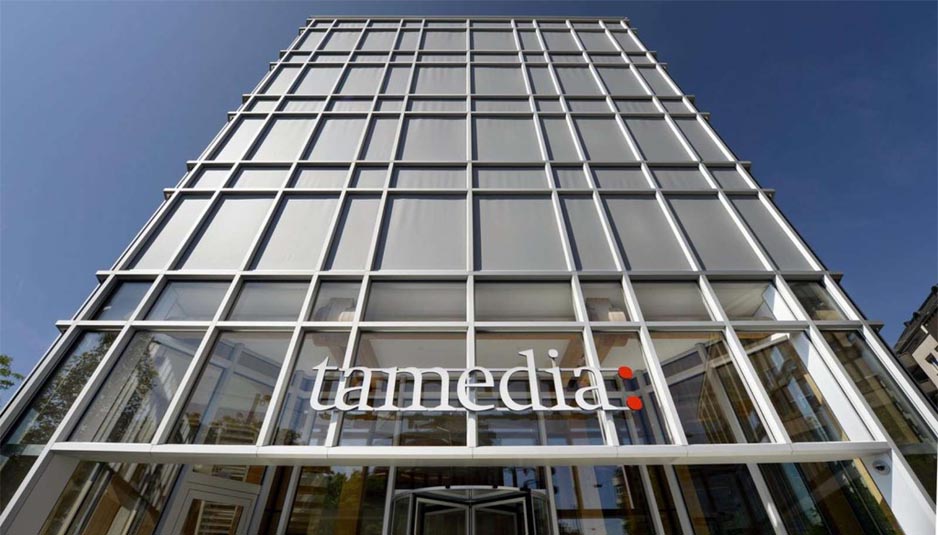
aasarchitecture.com
A skeleton of laminated wood seven-story signed by Shigeru Ban (Japanese architect, winner of the Pritzker Prize in 2014. This is the new home of Tamedia in Zurich along the river Sihil and is the first multi-floor wooden building in this Switzerland.
The building, completely interlocking, is built with 2000 cubic meters of wood laminated spruce (from forests certified Austrian) whose parts are connected without the use of metal joints, even to union between beams and columns andIt develops to fifty meters in height.
THE ARCHITECTURAL IDEA
The building is inspired by the traditional Japanese techniques used by carpenters of the Rising Sun, in particular those of “Miya-DAIKU” and “Sukiya-DAIKU”, in contemporary magazines.
These techniques seem to have their roots in the ancient Japanese game Chidori. Similar to the famous Chinese game of “shanghai“, through joints dry strips of wood with a square section, it allows the construction of modular structures knitted regular expandable spatially.
THE STRUCTURAL DESIGN
Seen in cross section, the building provides three bays overall, of which two terminals from the lights modest, each equal to 3.2 m and the central well 14 m, without intermediate supports, for a total length equal to 20.4 m. The vertical elements, of a height equal to five floors, have been erected on site through the use of a crane and made integral by inserting transversal bars oval section 5.5 m long and 35 cm high, in order to prevent the rotation of the facade.
The primary beams are of type Vierendeel and the secondary are laminated wood with a rectangular section, and are arranged in a orthogonal grid. The horizontal elements are also made of wood, and after their installation has proceeded to the placement of the glass facade.
What is surprising are the connections instead of bolted flanged joints or additional steel were adopted bolts special beech plywood, for the transmission of the load and the strengthening of the constructive elements. This structure was assembled on site through the use of prefabricated elements produced with CNC milling machines, with accuracies in the order of a millimeter.
Great care has been taken to prevent the risk of fire and the collapse of the structure, overbuilding that purpose elements with a layer of sacrifice equal to 42 mm, which is the layer of wood that can burn in 60 minutes.
ENERGY SAVING
The double-sided acts as insulation cushion and helps the natural ventilation of the building. 50 meters long, has excellent insulating properties, as with low-emissivity glass. The heating and cooling of the complex is via geothermal ground water, without carbon dioxide emissions resulting from fossil fuels.
ENVIRONMENTAL SUSTAINABILITY
The use of wood reduces the environmental impact of CO2 released into the environment: just think that 1 m3 of concrete releases about 1,200 kilograms of CO2, compared to only 150 kg of CO2 generated from 1 m3 of wood construction. A good thermal insulation and the use of heat pumps allow to contain the operating costs.
The total cost of the work is approximately 40 million euro.

